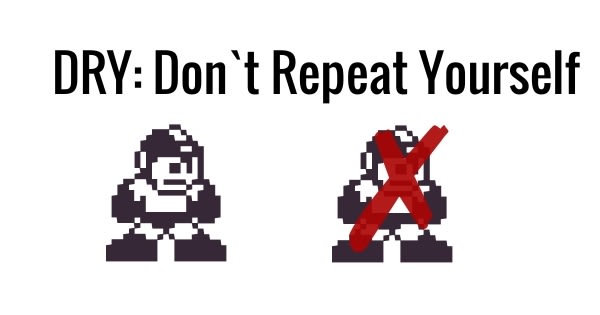Mastering Efficiency: The DRY Principle in Software Engineering
 akash javali
akash javali
Introduction:
In the dynamic world of software engineering, efficiency is paramount. As developers strive to create robust, maintainable, and scalable systems, adhering to established principles becomes crucial. One such principle that stands as a cornerstone of effective software development is the DRY principle – Don't Repeat Yourself. Let's delve into the essence of this principle and understand why it's considered a fundamental tenet in the software engineering realm.
Why DRY?
Write code once, and use it often.
Change code in one place, and see the change in all instances.
Less code is good: It saves time and effort, is easy to maintain, and also reduces the chances of bugs.
Understanding the DRY Principle:
At its core, the DRY principle advocates for eliminating redundancy in code. It posits that every piece of knowledge or logic within a system should have a single, unambiguous representation. In simpler terms, it emphasizes the importance of writing code that is concise, modular, and reusable. By adhering to the DRY principle, developers can mitigate the risks associated with duplicating code, such as increased maintenance efforts, heightened susceptibility to errors, and decreased overall readability.
Benefits of Embracing DRYness:
Enhanced Maintainability: When code is free from duplication, maintaining and updating the system becomes significantly easier. Developers can make changes in one place, confident that it will propagate throughout the entire codebase without the need for tedious manual adjustments.
Improved Readability: Duplicated code fragments can clutter the codebase, making it difficult for developers to grasp the system's logic at a glance. By adhering to the DRY principle, code becomes more concise and coherent, enhancing its readability and facilitating better collaboration among team members.
Facilitated Scalability: Systems designed with DRYness in mind are inherently more scalable. Reusable components and modular structures enable developers to extend functionality without reinventing the wheel, thereby promoting scalability and future-proofing the codebase.
Reduced Error Prone: Duplicated code is a breeding ground for bugs. When the same logic is replicated across multiple parts of the codebase, inconsistencies and discrepancies are bound to arise, increasing the likelihood of introducing errors. By centralizing logic and eliminating redundancy, developers can minimize the risk of bugs and enhance the robustness of their software.
Implementing the DRY Principle: Embracing the DRY principle requires a proactive approach to code design and organization. Here are some strategies to foster DRYness in your software projects:
Identify Patterns: Look for recurring patterns or logic within your codebase. Identifying these commonalities allows you to extract them into reusable components or functions, thereby promoting code reusability and reducing duplication.
Abstraction and Encapsulation: Utilize abstraction and encapsulation to encapsulate common functionality into reusable modules or classes. By encapsulating related behavior, you can minimize duplication while promoting modularity and maintainability.
Utilize Libraries and Frameworks: Leverage existing libraries and frameworks to avoid reinventing solutions to common problems. By relying on established tools and components, you can streamline development efforts and reduce duplication across projects.
Refactor Regularly: Regular refactoring is essential for maintaining code quality and adhering to the DRY principle. As you identify areas of duplication or inefficiency, refactor your code to eliminate redundancy and improve overall code quality.
Conclusion:
In the realm of software engineering, efficiency is not just a desirable trait – it's a necessity. The DRY principle serves as a guiding light, empowering developers to write code that is maintainable, scalable, and robust. By embracing DRYness in their codebase, developers can streamline development efforts, enhance code quality, and future-proof their software against the challenges of tomorrow. So remember, the next time you find yourself tempted to copy and paste code, think twice and ask yourself: can this be a DRYer?
Subscribe to my newsletter
Read articles from akash javali directly inside your inbox. Subscribe to the newsletter, and don't miss out.
Written by

akash javali
akash javali
A passionate 'Web Developer' with a Master's degree in Electronics and Communication Engineering who chose passion as a career. I like to keep it simple. My goals are to focus on typography, and content and convey the message that you want to send. Well-organized person, problem solver, & currently a 'Senior Software Engineer' at an IT firm for the past few years. I enjoy traveling, watching TV series & movies, hitting the gym, or online gaming.